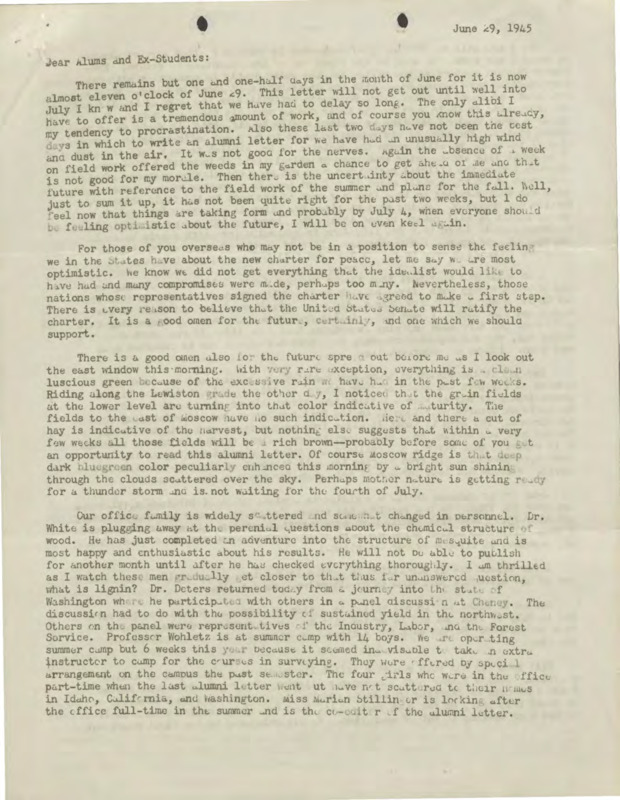About the Collection
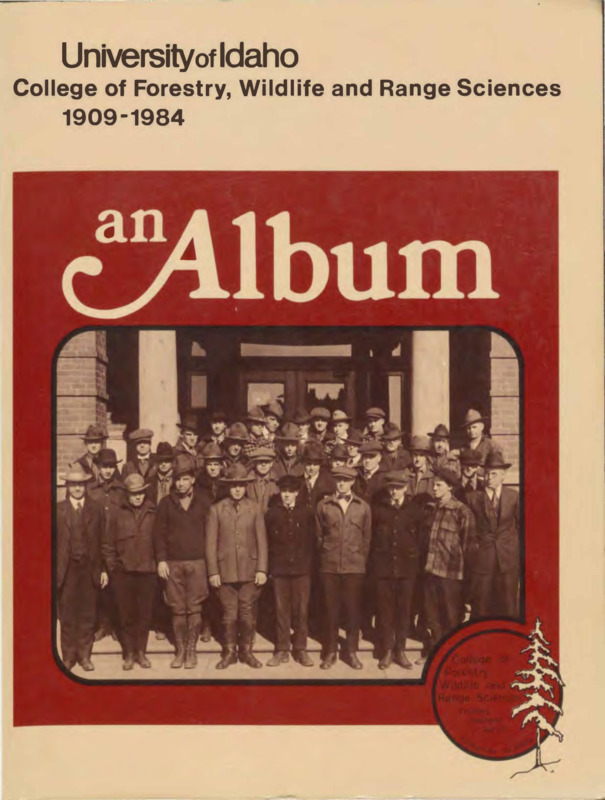
University of Idaho: College of Forestry, Wildlife and Range Sciences 1909-1984, an Album
The College of Natural Resources (CNR) has a long-standing history, beginning in 1909 and continuing to this present day. The College has drastically evolved during this time, initially beginning in 1909 as the Department of Forestry within the College of Agriculture, then transitioning into a School in 1917, and eventually becoming its own College in 1953. Alongside its various name changes during the expanse of 100+ years, CNR has reshaped its mission and services, thanks to the leadership and vision of its Deans.
The materials in the College of Natural Resources Collection span from 1886-2017, with most materials covering 1900-2000. This collection includes a majority of materials pertaining to Deans’ Office Files, Photos, Administration, Field Campuses and Programs. There are a wide breadth of material types: documents, correspondence, brochures, pictures, slides, albums, journals, printing blocks, equipment and even the old building letters of the College of Forestry, Wildlife and Range Sciences.
About the College of Natural Resources
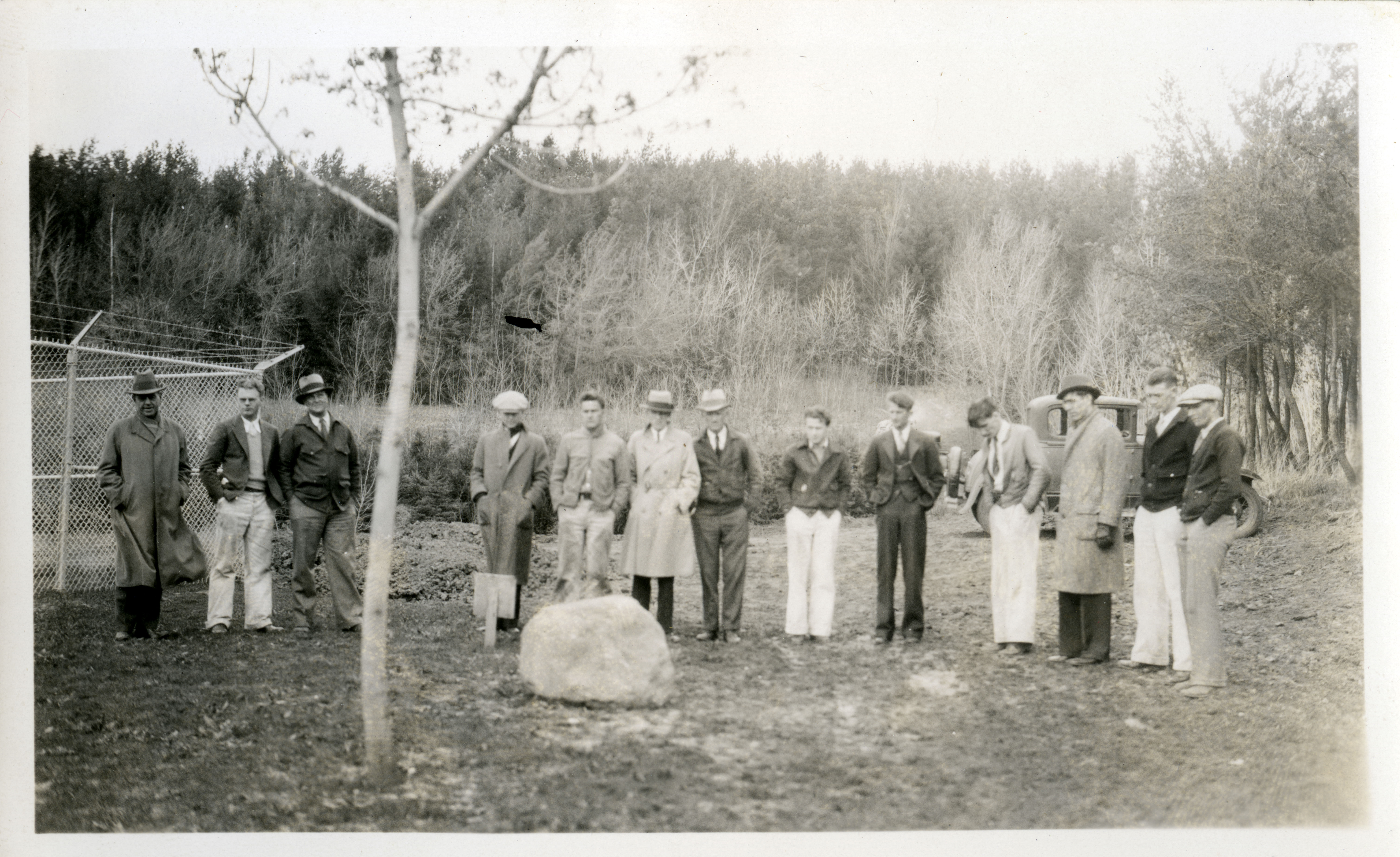
The College of Natural Resources began as the Department of Forestry (1909) within the College of Agriculture. Under the guidance of Charles H. Shattuck, its first Head and later the Dean of the College of Letters and Science, the Department grew (1914-1917). Initially, the Department served emerging foresters by training them in the “ways of the woodsman” and emphasizing the needs of the lumber industry. Additionally, Shattuck orchestrated the creation of the University’s first arboretum (1909), later renamed the Charles Houston Shattuck Arboretum in his honor (1933).
Growth led the Department to become the School of Forestry (1917), further developing under Dean Francis Garner Miller (1917-1934). Under Miller, the Experimental Forest was acquired (1932). Following him, Dean Richard E. McArdle served for only one year (1934-1935) before Dean Dwight Smithson Jeffers took the helm and navigated the School through the World War II era (1935-1953). Jeffers’ leadership led to very formative years for the School, with the addition of Summer Camp, the Forest, Wildlife and Range Experiment Station, the Idaho Cooperative Wildlife Research Unit, and the beginnings of the fisheries and wildlife programs.
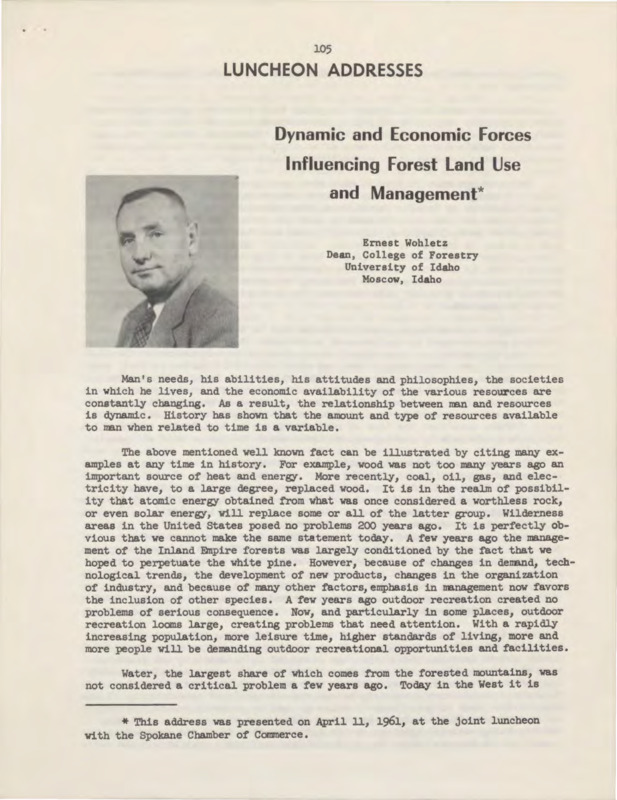
Luncheon Address by Dean Wohletz
The post-war boom in enrollment necessitated another evolution. Thus, the School of Forestry became the College of Forestry (1953) under Dean Ernest W. Wohletz (1953-1971). Following structural changes within the College, including the additions of the Idaho Cooperative Fishery Unit and site for the Wilderness Field Station (Taylor Ranch), sustainability became increasingly important as environmental issues followed the lumber practices of the time. Furthermore, growth necessitated a new home for the College from Morrill Hall, which had been used since 1909, to the current CNR Building in 1971.
Thus, the scope of the College expanded to include other areas of study, causing another name change: the College of Forestry, Wildlife and Range Sciences (1963). After Dean Wohletz, Dean John H. Ehrenreich assumed responsibility for the College (1971-1984). Ehrenreich took several actions to further develop the college, such as the division of the college into departments (1979), the establishments of the Cooperative Park Studies Unit headquarters on campus, Inland Empire Tree Improvement Cooperative, Intermountain Tree Nutrition Cooperative, Clark Fork Field Campus, Wilderness Research Center, International Program, and an FWR Alumni Association. He and his wife Dixie Ehrenreich also encouraged more women to join the College and its administration (see Women in Natural Resources).
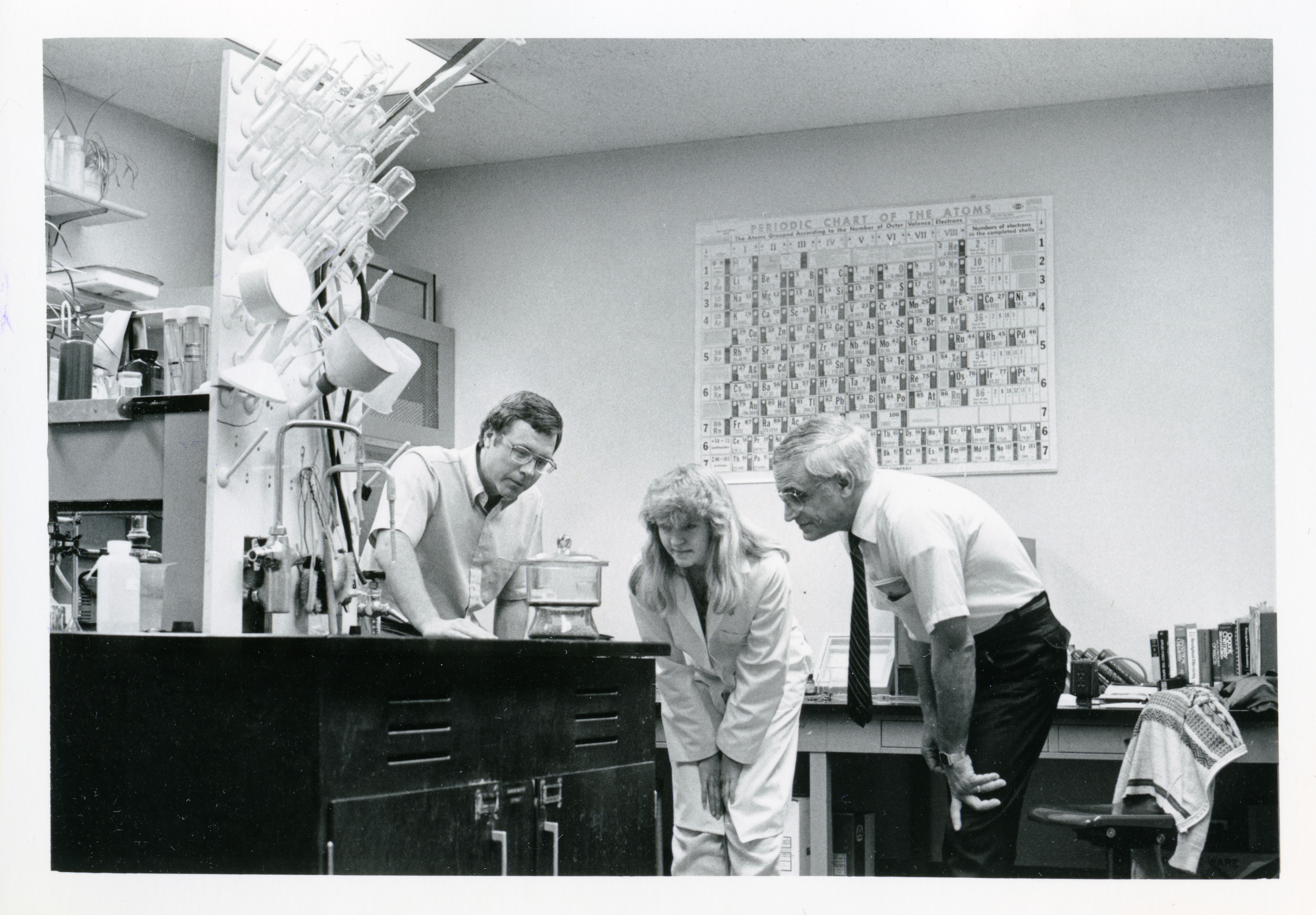
Ernest D. Ables briefly assumed responsibility as Associate Dean (1984) before Dean John C. Hendee succeeded him (1985-1995), bringing confidence in the face of a depressed forest industry. Hendee was succeeded by Dean Charles R. Hatch (1995-2001). Under Hatch, the College became broader, changing its name to the College of Natural Resources (2000). What once was education set to create foresters reshaped into a branching institution of many career paths: biologists, surveyors, firefighters, etc. Many more Deans carried the torch, further developing the College and integrating new practices and technologies: Deans Leonard Johnson (2001-2002), Steven B. Daley-Laursen (2002-2010), Kurt S. Pregitzer (2010-2018), to Dennis Becker (2018-present). Now, the College aims to foster a wide-reaching educational experience that engages both faculty and students with natural resources of the state, region and world.

